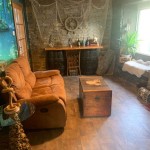Black, White, and Turquoise Bedroom Decor: A Comprehensive Guide
The combination of black, white, and turquoise offers a sophisticated and visually stimulating palette for bedroom decor. This triadic color scheme balances depth, neutrality, and vibrancy, allowing for a range of design styles from minimalist to bohemian. The inherent versatility of this combination stems from the contrasting nature of its components. Black grounds the space, providing a sense of structure and sophistication. White introduces brightness and airiness, preventing the room from feeling closed in or somber. Turquoise injects a refreshing pop of color, evoking a sense of tranquility and connection to nature.
Successfully implementing this color scheme requires careful consideration of proportion, texture, and the overall desired aesthetic. The dominance of each color will significantly influence the room's atmosphere. A room with predominantly white walls and black accents, coupled with turquoise highlights, will feel lighter and more spacious than a room featuring black walls with white and turquoise accents. Similarly, the choice of materials, such as velvet, linen, or wood, can further enhance the desired effect. The interplay of these factors is crucial in achieving a cohesive and harmonious bedroom environment.
Furthermore, the specific shade of turquoise chosen plays a pivotal role. Lighter, more pastel turquoise hues create a softer, more calming atmosphere, ideal for promoting relaxation and sleep. Deeper, more saturated turquoise shades introduce a bolder, more energetic vibe. The selection should align with the desired mood and the overall design intent. Careful planning is essential to avoid a jarring or unbalanced effect. Consider the existing architectural features of the room, such as natural light sources, wall textures, and flooring materials, when making design decisions.
Understanding the Color Psychology
Color psychology is a key element to consider when designing any interior space, and the black, white, and turquoise combination is no exception. Black is often associated with power, elegance, and sophistication. It can also evoke feelings of mystery and depth. However, excessive use of black can create a sense of heaviness or foreboding, particularly in a bedroom environment. White, on the other hand, represents purity, cleanliness, and simplicity. It promotes a sense of spaciousness and clarity, making it an excellent choice for walls and larger furniture pieces. Turquoise is often linked to tranquility, healing, and creativity. It can evoke feelings of calmness and connection with nature, making it a particularly suitable color for a bedroom environment intended for rest and rejuvenation.
The strategic use of these colors can significantly impact the overall mood of the room. White walls with black accents and turquoise accessories will create a bright and airy space that feels clean and uncluttered. Black walls with white accents and turquoise highlights will create a more dramatic and intimate setting. Using turquoise as the dominant color on walls can create a calming and serene atmosphere, but it is important to balance it with sufficient black and white to prevent the room from feeling overwhelming or monotonous.
Consider the personal preferences of the individual who will be using the bedroom. While adhering to design principles is important, the ultimate goal is to create a space that feels comfortable and inviting for the occupant. If the individual prefers a more minimalist aesthetic, a white and black base with subtle turquoise accents may be the most suitable option. If they prefer a more vibrant and expressive space, a bolder use of turquoise with black and white grounding elements may be more appropriate. Understanding the individual's preferences and needs is essential for creating a bedroom environment that truly reflects their personality and promotes well-being.
Key Design Elements and Implementation
Several key design elements can significantly enhance the effectiveness of a black, white, and turquoise bedroom decor scheme. These include wall treatments, furniture selection, textiles and accessories, and lighting. Each element plays a crucial role in creating a cohesive and harmonious space.
Wall treatments are the foundation of any bedroom design. White walls are a classic choice, providing a neutral backdrop that allows the black and turquoise elements to stand out. Black accent walls can create a focal point and add depth to the room. Turquoise walls can create a calming and serene atmosphere. Consider using textured wall treatments, such as wallpaper or stenciling, to add visual interest and dimension. For example, a subtle geometric pattern in white or black on a turquoise wall can create a sophisticated and contemporary look.
Furniture selection should complement the overall color scheme. White furniture will enhance the brightness and airiness of the room. Black furniture will provide a sense of grounding and sophistication. Consider incorporating natural wood tones to add warmth and texture. Upholstered furniture in turquoise can serve as a focal point and add a pop of color. When selecting furniture, consider the scale and proportion of the room. Avoid overcrowding the space, as this can create a cluttered and overwhelming feel. Choose pieces that are functional and stylish, reflecting the overall design aesthetic.
Textiles and accessories are essential for adding personality and warmth to the bedroom. Throw pillows, blankets, rugs, and curtains can all be used to introduce color, texture, and pattern. Consider using a variety of fabrics, such as velvet, linen, and cotton, to create visual interest. Geometric patterns, floral prints, and abstract designs can all be incorporated, but it is important to maintain a sense of balance and harmony. Artwork, decorative objects, and personal items can also be used to personalize the space and reflect the occupant's personality. Black and white photographs, turquoise vases, and geometric sculptures can all add character and charm.
Lighting is a crucial element in any bedroom design. Natural light is ideal, but it is important to supplement it with artificial lighting. Consider using a combination of ambient lighting, task lighting, and accent lighting to create a layered and inviting atmosphere. Ambient lighting, such as overhead fixtures or recessed lights, provides general illumination. Task lighting, such as bedside lamps or reading lights, provides focused illumination for specific activities. Accent lighting, such as spotlights or wall sconces, highlights architectural features or decorative objects. Dimmable lighting allows for adjusting the intensity of the light to suit different moods and activities. Consider using warm-toned light bulbs to create a cozy and inviting atmosphere.
Achieving Different Design Styles
The black, white, and turquoise color palette is versatile enough to accommodate a variety of design styles, from minimalist to bohemian. Understanding the key characteristics of each style and how to adapt the color scheme accordingly is essential for achieving the desired aesthetic.
A minimalist approach emphasizes simplicity, functionality, and clean lines. In a minimalist black, white, and turquoise bedroom, the color scheme should be used sparingly. White should be the dominant color, with black and turquoise used as accents. Furniture should be simple and streamlined, with minimal ornamentation. The focus should be on creating a calm and uncluttered space that promotes relaxation and tranquility. Use high-quality materials and focus on functionality. Avoid unnecessary accessories and clutter. A minimalist approach creates a sense of spaciousness and clarity.
A modern aesthetic emphasizes clean lines, geometric shapes, and a neutral color palette. In a modern black, white, and turquoise bedroom, the color scheme should be used in a bold and graphic way. Black and white can be used to create strong contrasts, while turquoise can be used as a pop of color. Furniture should be sleek and contemporary, with clean lines and simple shapes. Artwork and accessories should be carefully chosen to complement the overall aesthetic. Incorporate geometric patterns and metallic accents. A modern approach creates a sophisticated and stylish space.
A bohemian style embraces eclecticism, individuality, and a mix of textures and patterns. In a bohemian black, white, and turquoise bedroom, the color scheme can be used in a more expressive and playful way. Incorporate a variety of patterns, textures, and materials. Use vintage furniture, hand-crafted textiles, and globally inspired accessories. Layer rugs, throw pillows, and blankets to create a cozy and inviting atmosphere. Incorporate plants to add life and vibrancy. A bohemian approach creates a unique and personal space that reflects the occupant's personality and interests.
A coastal style evokes a sense of relaxation and connection to the sea. In a coastal black, white, and turquoise bedroom, the color scheme should be used to create a light and airy atmosphere. White should be the dominant color, with turquoise and black used as accents. Incorporate natural materials, such as wood, linen, and cotton. Use seashell accents, nautical stripes, and beach-themed artwork. Let natural light flood the room. A coastal approach creates a peaceful and serene space that evokes the feeling of being by the sea.
By understanding the principles of each design style and adapting the black, white, and turquoise color scheme accordingly, one can create a bedroom that is both stylish and functional, reflecting the desired aesthetic and promoting a sense of well-being.

Black White And Turquoise Bedroom Teal Decor

Pin On A Space To Sleep

17 Turquoise And Black Bedroom Ideas For Your Home Interior God Feminine Decor Makeover

Blue Black And White Bedroom Inspired Elegant Inspirations

Pin On Vanities

Modern White Black Turquoise Color Block Wallpaper By Annaleeblysse Society6

Teal And Black Bedroom Turquoise Room Design

31 Eye Catching Turquoise Bedroom Decor Ideas Shelterness

Pin On Slaapkamer

Turquoise Decor Ideas For The Bedroom







